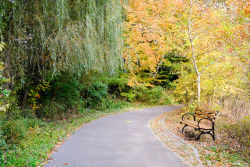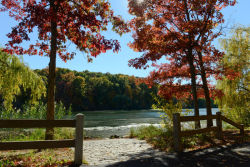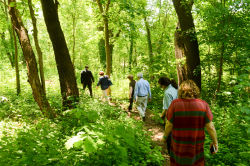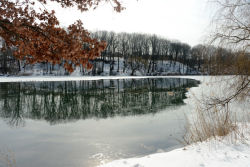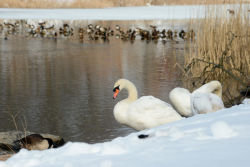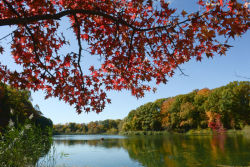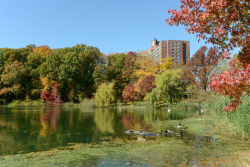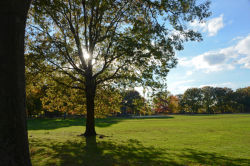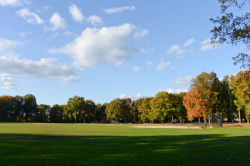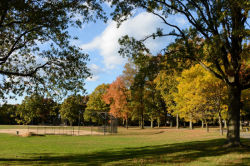Alley Pond Park
Alley Pond Park - Osprey in New York City
This park is host to the “Alley,” a 150-acre strip of wetlands in the park’s north end. Fresh water drains into the Alley from the hills and bubbles up from natural springs, mixing with the salt water from Little Neck Bay. As a result, the park is host to freshwater and saltwater wetlands, tidal flats, meadows, and forests, making for a diverse ecosystem and supporting abundant bird life, including one of nature’s most skillful hunters, the osprey.
The osprey (Pandion haliaetus) will plummet from up to 150 feet in the air and execute dramatic feet-first diving attacks on live fish, sometimes completely submerging itself before flying off with its prey trapped in its fierce talons. With the aid of a reversible toe and spiky, barbed footpads, ospreys are able to maneuver fish mid-flight into a headfirst position in order to reduce drag. They are distinguished by their brown backs, wings, and tails, white undersides, and distinctive brown stripe running across their heads. Like most predators, females are larger than males. A female’s wingspan can reach 5 feet, while a male’s approaches 4 feet. These birds build large nests: at least 3 feet deep and 5 feet wide, although they can reach heights of up to 10 feet. Highly adaptable to their environment, ospreys are known to nest in both natural areas, such as in trees, and man-made ones, such as on light-posts and utility poles.
Ospreys are among the world’s most widespread animals, found on all continents except Antarctica. However, in the 1950s and 60s, the eastern United States lost a considerable portion of its osprey population due to the use of DDT (dichlorodiphenyltrichloroethane) in agricultural pesticides. Pesticides containing DDT washed off farmers’ fields and into streams and rivers, where the chemicals accumulated in fish. The ospreys ate the contaminated fish, ingesting the chemicals, and causing the shells of osprey eggs to become too weak to support the weight of incubation. The eggs would shatter before the fledglings could hatch, and by the time DDT was finally banned in 1972, the eastern U.S. had seen a dramatic decrease in the number of nesting ospreys. In the 1940s, between New York City and Boston, there were 1000 active nests; by 1969, there were 150. DDT also harmed the nation’s peregrine falcons (Falco peregrinus) and bald eagles (Haliaeetus leucocephalus).
Eventually, the nation’s ecosystems were purged of dangerous DDT levels, and the osprey population began once more to thrive, protected by the Endangered Species Act. In 1983, the osprey’s status was downgraded from its 1976 listing of “Endangered” to “Threatened,” and, in 1999 it was downgraded once again to “Special Concern.” Today, there are over 230 breeding pairs in lower New York State, mostly concentrated on the eastern coast of Long Island. Ospreys may also be seen diving for fish in the lake at Van Cortlandt Park and in Pelham Bay Park in the Bronx.
Alley Pond Park officially opened in 1935 at a ceremony attended by Mayor Fiorello La Guardia (1882-1947) and Parks Commissioner Robert Moses (1888-1981). The new park also offered a 23-acre bird sanctuary, bridle paths, tennis courts, picnic areas, and a 200-space parking lot. Title to the Vanderbilt roadway was transferred to Parks in 1937, and the next year it was converted to a 2.5-mile bicycle path. In its zeal to convert the area for recreational uses and through the construction of the Long Island Expressway and Cross Island Parkway in the 1930s, Parks filled in much of the marshland, which now is recognized as a vital link in nature's ecosystem. In 1974 Parks reversed this practice, creating the Wetlands Reclamation Project and rehabilitating the park's natural wetlands, which today are some of the best places to view osprey. The Alley Pond Environmental Center opened in 1976 to provide the public with an understanding of the park's history and ecology.
Check out your park's Vital Signs
Clean & Safe
Green & Resilient
Empowered & Engaged Users
Share your feedback or learn more about how this park is part of a
Vital Park System

